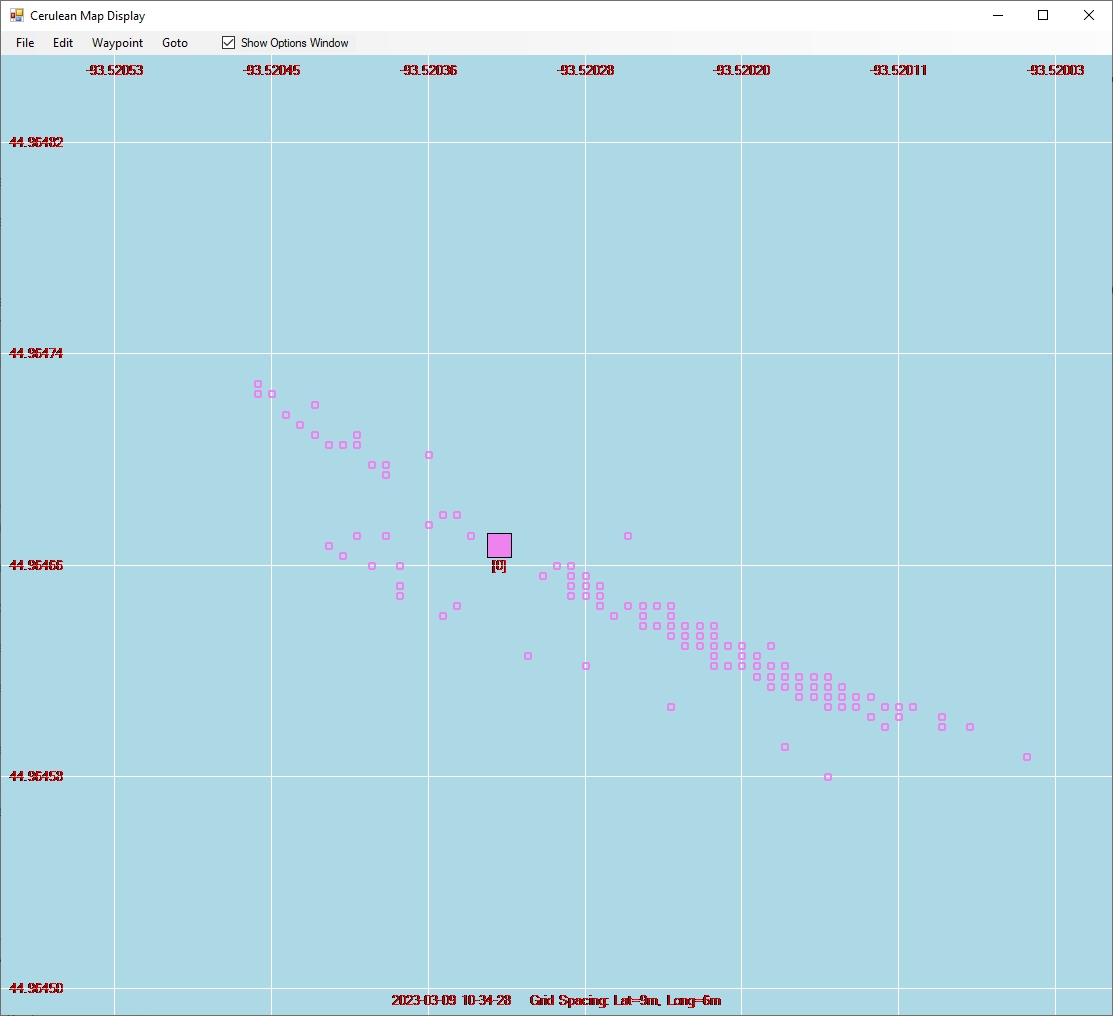Accuracy Test: 295 Meter Slant Range
The scatter of ROV positions at 295 meters covers a band about 35 meters long. About 90 percent of the error is in the transceiver measuring the relative bearing to the transponder, plus the IMU heading error. This scatter shows about +/- 2.5 degrees error in relative bearing, likely due to phase measurement errors.
The slant range error is partly GPS error and partly slant range measurement due to multipath.
You can see there are two separate bands of positions. Initially, we cut a hole right at 300 meters and took a few measurements. However, the total range allowed is hard-limited to 300 meters (to prevent interference from adjacent systems) and was affecting another aspect of this test, so we moved 5 meters closer to the transponder.
